If you’re like me and live in an area where summers can be unbearably hot, you’ve probably thought about how to efficiently cool your home without breaking the bank. After a lot of research, I decided to give the Prime Mini Split a try.
I was drawn in by its eco-friendly features, quiet operation, and energy efficiency promises. If you’re considering this model, let me share my personal experience and some key points that you should know before making a decision.
I’ll also highlight where you can purchase this mini split and how it compares to other brands.
My First Impressions With Prime Mini Split
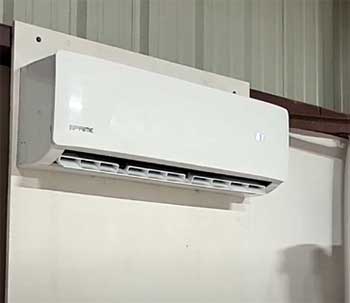
The installation of the Prime Mini Split was relatively simple, especially because it came with an easy-to-follow manual in both English and Spanish.
The unit came precharged with eco-friendly refrigerant (R410A), which, as someone who tries to be mindful of environmental issues, was a big plus.
I was particularly impressed with how quiet the system runs.
When they say this unit operates with “exceptionally quiet operation,” they mean it. It barely makes a sound, which makes it great for use in bedrooms or living rooms where noise could be disruptive.
From the first time I switched it on, the cooling was consistent and fast. The 4-way airflow is amazing; the room cooled uniformly, and I didn’t have to constantly fiddle with the remote to adjust the settings.
It’s worth mentioning that the automatic oscillation function made it easier to maintain an even temperature throughout the room.
Pros of The Prime Mini Split
As someone who values efficiency and ease of use, there are a lot of things I loved about the Prime Mini Split. Here are the main benefits I experienced:
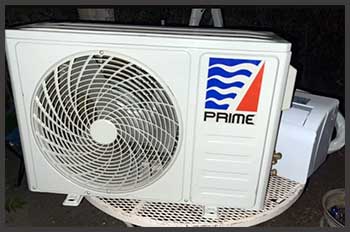
- Eco-Friendly Refrigerant: I was excited to see that the Prime Mini Split uses R410A refrigerant, which doesn’t harm the ozone layer. If you’re eco-conscious, this is a huge win. Not only does it help protect the environment, but it also makes the unit more energy-efficient.
- Quiet Operation: I can’t emphasize enough how quiet this unit is. Whether it’s day or night, the Prime Mini Split operates almost silently. It’s ideal for light sleepers like myself or for those with young children who need a peaceful environment.
- 4-Way Airflow and Intelligent Defrosting: The 4-way airflow feature really helps in evenly distributing the air around the room. Combined with intelligent defrost functions, the unit maintains efficiency even in colder months when frost can become a problem. This feature eliminates the need for manually defrosting the unit, which is a big time-saver.
- Air Quality and Self-Cleaning: The filters, which are optional but highly recommended, work great at removing allergens and dust. I noticed a difference in the air quality almost immediately. The anti-mold, self-cleaning feature is another bonus that prevents mold and mildew from forming inside the unit, keeping the air fresh and clean.
- Durability with Anti-Corrosion Coating: Living in a humid environment, I was concerned about rust and corrosion affecting the unit over time. Thankfully, the anti-corrosion coating has helped the outdoor unit withstand harsh weather, including heavy rain and high humidity. It’s built to last in environments that are typically corrosive or salty, which is especially useful if you live near the coast.
Cons of the Prime Mini Split
While there are plenty of things to love, no product is perfect. Here are a few drawbacks I encountered:
- Installation Challenges: Although it comes with a 10-foot installation kit, I found that the copper lines were a little too short for my setup. If your room requires more length, you’ll need to purchase additional materials, which can add to the overall cost.
- Initial Cost: While the unit is energy-efficient and can save money in the long run, the upfront cost is relatively high compared to window units or smaller portable air conditioners. It’s a worthwhile investment if you plan on using it long-term, but it’s something to consider if you’re on a budget.
- Optional Air Filters: Although the air filters are great, they don’t come standard with the unit. You have to purchase them separately if you want the full benefit of dust and allergen protection. I wish these were included with the package, considering the price point of the unit.
Maintenance Tips For Prime Mini Split
Like any piece of equipment, the Prime Mini Split requires regular maintenance to keep running smoothly. Here’s what I’ve found works best:
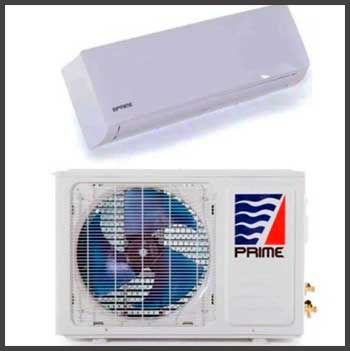
- Clean the Filters Regularly: It’s important to clean or replace the filters at least every 3 months, especially if you live in an area with high levels of dust or pollen. This not only keeps the air quality high but also ensures the unit runs efficiently.
- Keep the Outdoor Unit Clear: Ensure the outdoor unit is free from debris, leaves, or other blockages. This keeps the airflow unobstructed, which is essential for the unit’s performance.
- Check the Drainage: The unit has a built-in dehumidification feature, so it’s important to check the drainage pipe occasionally to ensure it’s not clogged. A blocked drainage pipe can lead to mold growth, which can affect both air quality and the unit’s longevity.
- Schedule Regular Servicing: While you can handle most of the maintenance yourself, it’s a good idea to have a professional service the unit annually. This ensures everything is functioning as it should and catches any potential problems early on.
Comparison With Other Mini Splits
When I was deciding on a mini split for my home, I looked at several other brands as well, including Rovsun, Everwell, and Confortotal. Each has its strengths and weaknesses, and after experiencing the Prime Mini Split, I think it holds its own pretty well.
Here’s how Prime compares with these other brands based on my research and personal experience.
- Price
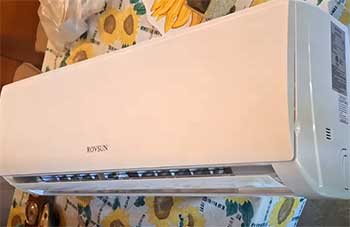
When it comes to price, the Rovsun Mini Split is one of the most affordable options on the market.
It’s great if you’re on a tight budget, but it lacks some of the advanced features you’ll find in the Prime Mini Split.
Everwell and Confortotal are priced similarly to Prime, but they don’t always offer the same energy efficiency or quiet operation that Prime does.
While Rovsun may be cheaper, you’re sacrificing some performance and reliability. I found the Prime Mini Split to offer the best balance between affordability and advanced features, especially with its eco-friendly refrigerant and quiet operation.
- Quiet Operation
Prime Mini Split outshines the competition when it comes to noise. In my experience, the unit is almost silent, which makes it a top choice for bedrooms or living spaces where you need quiet operation.
Rovsun, Everwell, and Confortotal units tend to be a bit noisier. Although none of them are excessively loud, they don’t reach the same level of quiet as the Prime Mini Split. If noise levels are important to you, the Prime Mini Split is the better option.
- Energy Efficiency
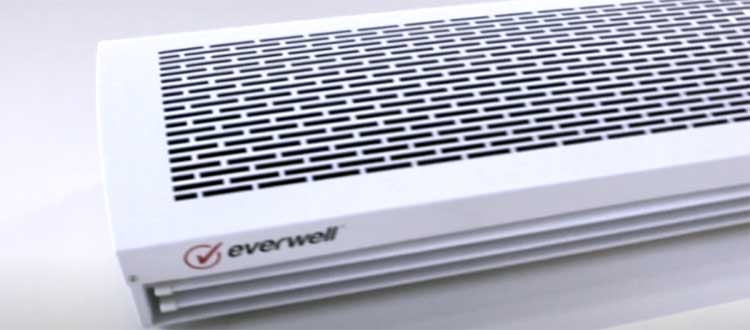
Prime Mini Split excels in energy efficiency, largely due to its R410A refrigerant, which is eco-friendly and designed to lower energy consumption. The intelligent defrost function also boosts its energy efficiency, helping it maintain performance during colder months without unnecessary energy waste.
Everwell Mini Split also performs decently in terms of energy efficiency, but it lacks some of the advanced features that make the Prime more efficient overall.
The Rovsun and Confortotal Mini Splits are generally less efficient, which could lead to higher energy bills over time, especially if you’re using them heavily for both heating and cooling.
- Durability and Build Quality
The Prime Mini Split is designed with an anti-corrosion coating, which protects the outdoor unit from rust and wear, making it particularly good for homes in humid or coastal environments. I live in a humid area, so this feature was a big selling point for me.
Confortotal Mini Split is known for its durability, but it lacks the anti-corrosion protection that Prime offers. Rovsun and Everwell units are decent in terms of build quality, but I’ve seen reports of components wearing out more quickly, especially in harsher weather conditions. For long-term durability, the Prime Mini Split seems to have an edge.
- Features and Functionality
The Prime Mini Split comes packed with smart features like 4-way airflow, automatic oscillation, and self-cleaning functions, making it more versatile and convenient to use. I really appreciated these features because they took a lot of the guesswork out of maintaining the right temperature and air quality.
Everwell Mini Split has similar functionality but lacks some of the high-tech features like self-cleaning and intelligent defrosting. Confortotal has a more basic feature set, with fewer automation options compared to Prime.
Rovsun Mini Split is even more basic and lacks many of the convenient features like airflow control and anti-mold functions, which are standard with Prime.
- Air Quality
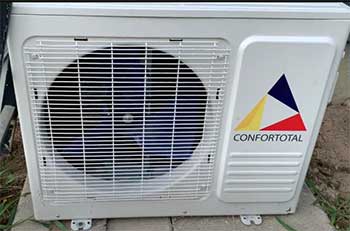
The Prime Mini Split has an optional antibacterial filter, which helps capture dust, allergens, and other airborne contaminants.
I noticed a significant improvement in indoor air quality after installing the unit, and the self-cleaning function also helps keep mold and bacteria at bay.
Rovsun and Confortotal Mini Splits don’t offer these advanced air filtering options, which may be a drawback if air quality is a priority for you.
Everwell does include decent filtration options, but in my experience, the Prime Mini Split’s combination of air filtration and self-cleaning makes it the superior choice for clean, breathable air.
Frequently Asked Questions (FAQ)
It depends on what you’re looking for. Prime, Mitsubishi, and Daikin are all excellent brands, but Mitsubishi is often seen as the most high-end. However, Prime balances affordability with many of the features found in more expensive brands.
If your Prime Mini Split isn’t cooling, it could be due to several issues: clogged filters, low refrigerant levels, or a blocked outdoor unit. Make sure you clean the filters regularly and ensure the outdoor unit is free from debris.
While mini splits are generally energy-efficient, they can be expensive to install. Some models may also require additional parts if your installation requires more than the included length of piping.
Yes, in many cases, mini splits are cheaper to heat with compared to traditional heating systems. They are designed to be energy-efficient, which means lower energy bills during the colder months.
Conclusion: Should You Buy The Prime Mini Split?
In my experience, the Prime Mini Split delivers on its promises of efficient, quiet cooling and eco-friendliness. The 4-way airflow, eco-friendly refrigerant, and anti-corrosion features make it a great option if you’re looking for a reliable cooling and heating system.
While there are some downsides, like the upfront cost and optional air filters, I think it’s a worthwhile investment if you need something that balances performance with price.
